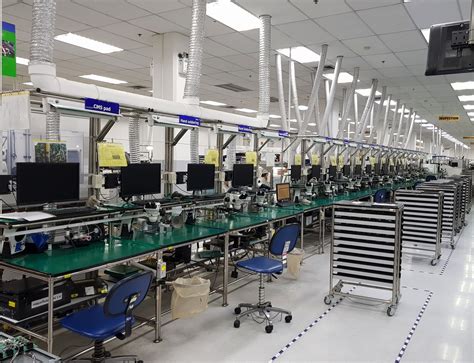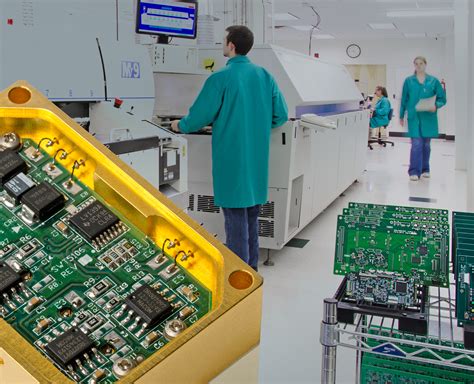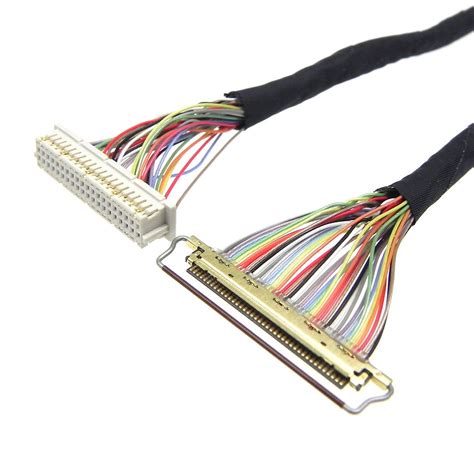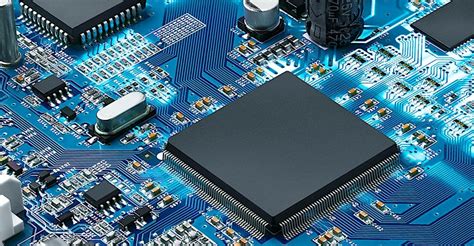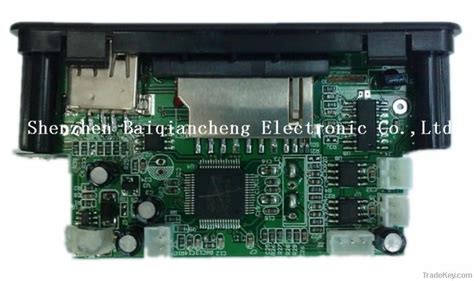Revolutionizing Design: The Rise of Custom Flex PCBs
Key Takeaways
Understanding the significance of custom flex PCBs in the electronic landscape is crucial for anyone involved in pcb manufacturing. These specialized printed circuit boards are not only flexible but also engineered to withstand varying thermal conditions, making them an ideal choice for advanced applications. As you explore the various pcb manufacturing companies, you will find that many are focusing on the development and production of custom flex PCBs due to their unique advantages. The pcb manufacturing cost associated with these boards is offset by their superior performance and versatility, allowing for innovative designs that traditional rigid boards cannot accommodate. This transformation in design capabilities illustrates how the pcb manufacturing business is evolving, as more industries recognize the potential of custom flex PCBs in versatile applications ranging from consumer electronics to automotive technology. By embracing these advancements, you’re positioning yourself to leverage a market that prioritizes efficiency, adaptability, and enhanced product functionality.
Introduction to Custom Flex PCBs: Definition and Overview
Custom flex PCBs (Printed Circuit Boards) are a revolutionary development in the field of electronic components, allowing for an unprecedented level of design versatility. Unlike traditional rigid PCBs, these flexible alternatives can bend, fold, and twist, providing a unique solution for a variety of applications ranging from consumer electronics to medical devices. By incorporating advanced materials and manufacturing techniques, custom flex PCBs not only present significant advantages in terms of space optimization but also enhance thermal management, making them particularly valuable in today’s compact electronic designs.
The rise of custom flex PCBs signifies a transformative shift in the pcb manufacturing landscape. Engaging with various pcb manufacturing companies can provide insights into how these flexible designs manifest into practical applications while also being cost-effective. It’s essential to consider the pcb manufacturing cost when evaluating your options—this can impact your project budget significantly without compromising innovation.
“Flexibility in design often leads to improved functionality across diverse applications.”
In essence, custom flex PCBs are not just about eliminating rigidity; they embody the future’s demand for adaptable technology that meets the ever-evolving needs of the market. Whether you are venturing into a new project or optimizing an existing design, understanding the core benefits and applications of these innovative circuit boards is crucial for your success in the competitive world of electronics.
The Advantages of Custom Flex PCBs: Flexibility and Thermal Resilience
Custom flex PCBs offer remarkable advantages that are reshaping the landscape of electronic design. One of the most significant benefits is their flexibility, allowing them to be bent and shaped to fit into compact and unconventional spaces. This adaptability is especially valuable in modern electronic devices, where space optimization is crucial. Because flex PCBs can conform to various geometries while maintaining electrical integrity, they enable designers to create innovative solutions that were previously unattainable with traditional rigid boards.
In addition to flexibility, thermal resilience stands out as a critical advantage. Advanced materials used in the production of custom flex PCBs are designed to withstand high temperatures without compromising functionality. This property makes them ideal for applications that involve fluctuating heat levels, such as in automotive electronics and wearable technology. To illustrate the significance of these advantages, consider the following comparison:
| Attribute | Custom Flex PCB | Traditional Rigid PCB |
|---|---|---|
| Flexibility | Highly flexible | Rigid |
| Thermal Resilience | Excellent | Limited |
| Design Versatility | High | Moderate |
As indicated in this table, custom flex PCBs exhibit superior performance regarding adaptability and heat resistance. Furthermore, you should consider how these benefits translate into real-world applications by referencing their indispensable role in sectors like aerospace, healthcare, and consumer electronics. Choosing a capable team among various pcb manufacturing companies is essential for optimizing your design needs while carefully evaluating the pcb manufacturing cost associated with custom solutions. Engaging with pcb manufacturing business ensures you leverage these advantages effectively for your product development goals.
Key Applications of Custom Flex PCBs in Modern Electronics
Custom flex PCBs are rapidly becoming invaluable in various sectors of modern electronics, ushering in a new era of design that balances efficiency and creativity. Their unique ability to bend and conform to tight spaces opens a world of possibilities, particularly in applications such as portable electronics, automotive technology, and medical devices. In the realm of pcb manufacturing, these flexible boards allow designers to create compact layouts that not only save space but also improve thermal management and signal integrity. This flexibility is paramount for developers aiming to push the boundaries of what is possible in cutting-edge devices.
For instance, in pcb manufacturing companies, the demand for lightweight and adaptable circuit solutions is driving innovation. Products like smartwatches or fitness trackers require intricate designs that traditional rigid PCBs cannot accommodate. Here, custom flex PCBs shine by enabling multi-layer circuits that deliver complex functionalities while maintaining a lightweight profile.
Additionally, the pcb manufacturing cost tends to decrease over time as more companies adopt these innovative solutions into their production lines. As efficiency improves within the pcb manufacturing business, this trend not only lowers expenses but also enhances overall product performance by creating designs that are specifically tailored to the user’s needs in dynamic environments. Recognizing these key applications is essential for any electronics professional looking to stay ahead in a competitive market where flexibility and resilience define innovation.
The Manufacturing Process of Custom Flex PCBs
The manufacturing process of custom flex PCBs involves several intricate steps that ensure these components meet the high standards of modern electronics. Initially, design takes a central role, where engineers use advanced software tools to create layout specifications that account for unique requirements such as flexibility and thermal resilience. This phase is critical, as it allows for customization tailored to specific applications. Following the design stage, the process moves to material selection. Flex PCBs often utilize materials that are lighter and more adaptable than traditional rigid options, contributing to their popularity among pcb manufacturing companies.
Next comes the etching process, where copper is meticulously removed from a laminate substrate using chemical processes. This step reveals circuit pathways crucial for functionality. These pathways are then covered with specialized coatings that enhance their durability and thermal management. The culmination of these steps leads into assembly, where components are attached using techniques like surface-mount technology and soldering—further blending skin-mounted flexibility with reliability.
Understanding the intricacies of this manufacturing process is essential not only for those in the industry but also for businesses looking to balance their pcb manufacturing cost with quality and performance needs. The rising demand for custom solutions has transformed how many approach their pcb manufacturing business, emphasizing innovation and adaptability in product design.
Comparing Custom Flex PCBs and Traditional Rigid PCBs
When evaluating custom flex PCBs against traditional rigid PCBs, it’s essential to consider the inherent differences that contribute to their functionality and application. Custom flex PCBs offer unmatched flexibility, allowing them to conform to various shapes and spaces where traditional rigid boards may fall short. This adaptability can significantly reduce the overall size and weight of electronic devices, making them ideal for portable and compact applications. Additionally, flex PCBs exhibit superior thermal resilience, enabling them to withstand higher temperatures while maintaining performance—an advantage in demanding environments.
In terms of pcb manufacturing, the processes for creating these two types of boards differ notably. While traditional rigid PCBs often utilize more standardized methods, the pcb manufacturing companies that specialize in custom flex applications tend to employ advanced techniques to cater for their unique properties, thus influencing the overall pcb manufacturing cost. Custom solutions may incur higher initial costs due to the complexity involved in production, including handling materials that require precise manipulation.
Moreover, the flexibility of custom designs fosters innovation; manufacturers can experiment with new layouts without being constrained by the geometric limitations associated with rigid boards. As your projects evolve, understanding these distinctions helps you make informed decisions that align with your design requirements and budget considerations in the ever-competitive landscape of the pcb manufacturing business. Therefore, while traditional boards have their place, custom flex PCBs are becoming increasingly pivotal in pushing technological boundaries forward.
Innovations Driving the Demand for Custom Flex PCBs
As you delve into the world of custom flex PCBs, it’s essential to recognize the pivotal innovations that are fueling their increasing demand. These advancements are reshaping the landscape not only by enhancing flexibility and thermal resilience but also by offering tailored solutions that meet the ever-evolving needs of various industries. For example, the integration of advanced materials in pcb manufacturing processes has significantly improved performance characteristics. By optimizing manufacturing techniques and adopting cutting-edge technologies, pcb manufacturing companies can reduce weight and enhance the adaptability of electronic designs, leading to more compact electronic products.
Moreover, the shift towards miniaturization in electronics has made custom flex PCBs an attractive option for designers aiming to maximize space utilization. They provide an effective solution where traditional methods fall short, addressing concerns related to rigidity and thermal stress effectively. As consumer electronics continue to push boundaries, understanding your needs for cost-effective solutions and reliable performance becomes crucial. The evolution in materials and production methodologies is helping reduce pcb manufacturing costs, making these innovative boards more accessible without compromising quality.
Ultimately, the growth of custom flex PCBs is a testament to how adaptive technology can meet contemporary demands in your electronic applications while promoting a sustainable pcb manufacturing business model that prioritizes efficiency and customization. This growing importance not only enhances design capabilities but also inspires further innovations across multiple sectors, paving the way for breakthroughs that were once seen as impossible. As you consider integrating these flexible solutions into your designs, reflect on how these innovations can support your unique goals in a competitive market.
Challenges and Considerations in Designing Custom Flex PCBs
Designing custom flex PCBs presents a unique set of challenges that engineers and designers must navigate to realize their innovative potential. One of the foremost challenges involves the intricate nature of flexible design, which demands a thorough understanding of material properties and electrical characteristics. Unlike traditional rigid boards, flex PCBs require careful attention to the bend radius, ensuring that they can withstand repetitive flexing without compromising performance. Additionally, when considering pcb manufacturing, the choice of materials can significantly impact the overall manufacturing cost and reliability. You must engage with pcb manufacturing companies that are experienced in handling flexible substrates, as not all providers possess the expertise to create high-quality products.
Thermal management is another crucial factor; as devices become more compact and powerful, overheating can lead to failure in flexible circuits. Therefore, attention must be paid to incorporating thermal relief features into the design process. Furthermore, you should be prepared for potential limitations related to pcb manufacturing business capabilities such as low-volume production runs or customization constraints. Lastly, collaboration with suppliers regarding production techniques—even aspects like layer stacking and adhesive choices—can enhance your project’s success by mitigating potential risks inherent in designing custom solutions. In conclusion, addressing these challenges diligently will not only enhance your designs but will also ensure greater performance and reliability in your final products.
Future Trends in Custom Flex PCB Technology
As you look ahead into the evolving landscape of custom flex PCBs, several trends are shaping the future of this innovative technology. One notable trend is the increased integration of sensors into flexible circuits, driven by the growing demand for smart and connected devices. This advancement not only enhances the functionality of your products but also optimizes space, allowing for more compact designs. Additionally, as sustainability becomes a paramount concern, pcb manufacturing companies are seeking eco-friendly materials and processes that reduce waste and energy consumption. The reduction in pcb manufacturing cost without compromising quality is also a key focus area, as businesses strive to remain competitive in a rapidly changing market. Innovators in the field are now looking to leverage advanced automation in the pcb manufacturing business, which promises to increase efficiency and accuracy while minimizing human error. With global markets expanding and the demand for custom flex PCBs skyrocketing, you can expect a surge in research and development efforts to further enhance thermal resilience and flexibility, making these technologies even more applicable across various sectors, from consumer electronics to medical devices. As these trends continue to unfold, staying informed will empower you to make strategic decisions that align with future developments in custom electronics design.
Conclusion
In your exploration of custom flex PCBs, you’ve witnessed how they are truly transforming the design landscape across various industries. The shift towards these innovative components is not merely a trend but an essential evolution driven by the growing demand for superior flexibility and thermal resilience in electronics. As you delve into the world of pcb manufacturing, you’ll understand that pcb manufacturing companies are increasingly recognizing the critical role that custom flex PCBs play. They provide solutions for challenging projects that require intricate designs and adaptability in different environments, all while optimizing pcb manufacturing cost. Whether you’re involved in a pcb manufacturing business or a designer seeking to enhance product functionality, grasping the intricacies of custom flex PCB technology is invaluable. Indeed, their versatility and capability to meet the needs of advanced electronic applications underscore their significance in current and future innovations.
FAQs
What are Custom Flex PCBs?
Custom Flex PCBs are printed circuit boards designed to be flexible, allowing for more compact and adaptable electronic products. They are essential in modern electronic applications due to their ability to fit into various shapes and configurations.
How do Custom Flex PCBs differ from traditional rigid PCBs?
While traditional rigid PCBs are inflexible and typically used in fixed designs, Custom Flex PCBs offer unmatched adaptability and can easily conform to different surfaces. This flexibility enhances design creativity and improves product functionality.
What is the typical PCB manufacturing cost for Custom Flex PCBs?
The PCB manufacturing cost can vary significantly based on the complexity of the design, the materials used, and the quantity ordered. It is often higher than rigid PCB costs due to the advanced technology and precision required.
Which are some reputable PCB manufacturing companies?
There are numerous reputable PCB manufacturing companies, including those that specialize in both custom flex and traditional boards. It’s essential to research and choose a company with a solid reputation for quality, reliability, and extensive capabilities in flexible circuitry.
What benefits do Custom Flex PCBs provide in electronic applications?
The primary benefits include enhanced design flexibility, improved thermal performance, lightweight construction, and increased robustness against stress and strain. They are particularly useful in compact devices where space is at a premium.


